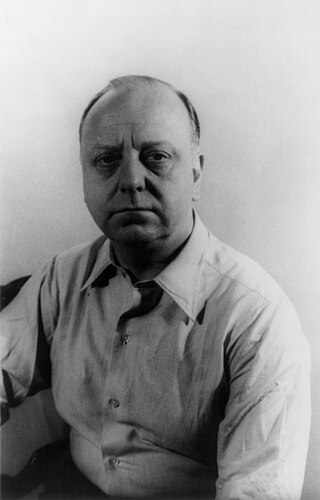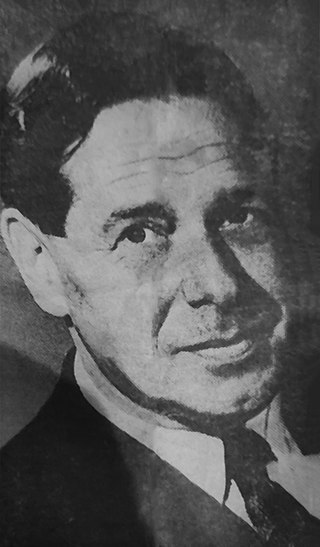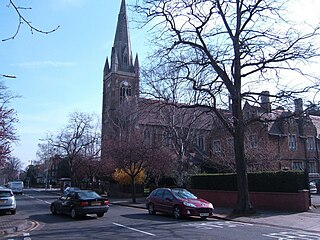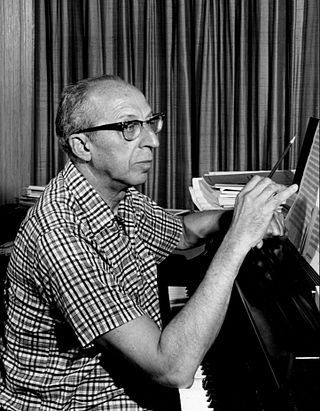Related Research Articles

Virgil Thomson was an American composer and critic. He was instrumental in the development of the "American Sound" in classical music. He has been described as a modernist, a neoromantic, a neoclassicist, and a composer of "an Olympian blend of humanity and detachment" whose "expressive voice was always carefully muted" until his late opera Lord Byron which, in contrast to all his previous work, exhibited an emotional content that rises to "moments of real passion".

Arthur Leslie Benjamin was an Australian composer, pianist, conductor and teacher. He is best known as the composer of Jamaican Rumba (1938) and of the Storm Clouds Cantata, featured in both versions of the Alfred Hitchcock film The Man who Knew Too Much, in 1934 and 1956.
Boosey & Hawkes is a British music publisher, purported to be the largest specialist classical music publisher in the world. Until 2003, it was also a major manufacturer of brass, string and woodwind musical instruments.
Sinfonia da Requiem, Op. 20, for orchestra is a sinfonia written by Benjamin Britten in 1940 at the age of 26. It was one of several works commissioned from different composers by the Japanese government to mark Emperor Jimmu's 2600th anniversary of the founding of the Japanese Empire. The Japanese government rejected the Sinfonia for its use of Latin titles from the Catholic Requiem for its three movements and for its somber overall character, but it was received positively at its world premiere in New York on 29 March 1941 under John Barbirolli. A performance in Boston under Serge Koussevitzky led to the commission of the opera Peter Grimes from the Koussevitzky Music Foundations.

Rejoice in the Lamb is a cantata for four soloists, SATB choir and organ composed by Benjamin Britten in 1943 and uses text from the poem Jubilate Agno by Christopher Smart (1722–1771). The poem, written while Smart was in an asylum, depicts idiosyncratic praise and worship of God by different things including animals, letters of the alphabet and musical instruments. Britten was introduced to the poem by W. H. Auden whilst visiting the United States, selecting 48 lines of the poem to set to music with the assistance of Edward Sackville-West. The cantata was commissioned by the Reverend Walter Hussey for the celebration of the 50th anniversary of the consecration of St Matthew's Church, Northampton. Critics praised the work for its uniqueness and creative handling of the text. Rejoice in the Lamb has been arranged for chorus, solos and orchestral accompaniment, and for SSAA choir and organ.
Christopher Norton is a British pianist and composer of Jazz music. His pieces are standard in piano learning repertoire, especially the ABRSM and RCM.
The Prince of the Pagodas is a ballet created for The Royal Ballet by choreographer John Cranko with music commissioned from Benjamin Britten. Its premiere took place on 1 January 1957 at the Royal Opera House, Covent Garden, London, conducted by Britten.
In classical music, it is relatively rare for a work to be written in collaboration by multiple composers. This contrasts with popular music, where it is common for more than one person to contribute to the music for a song. Nevertheless, there are instances of collaborative classical music compositions.
Variations on a Theme of Frank Bridge, Op. 10, is a work for string orchestra by Benjamin Britten. It was written in 1937 at the request of Boyd Neel, who conducted his orchestra at the premiere of the work at that year's Salzburg Festival. It was the work that brought Britten to international attention.
Benjamin Britten's Piano Concerto, Op. 13, is the composer's sole piano concerto.

Prelude and Fugue on a Theme of Vittoria is a work for solo organ composed by Benjamin Britten in 1946. It was commissioned for St Matthew's Church, Northampton and first performed on 21 September 1946, St Matthew's Day, three days after its composition. It uses a theme from a motet by the Spanish composer Vittoria, both in the prelude and as the basis for the fugue. The piece, which lasts about five minutes in performance, has had a mixed reception. One writer has noted the difficulty on finding a suitable organ on which to perform the piece, given the difficulties in finding appropriate registration to meet Britten's requirements. A reviewer of a concert performance in the 1960s called it "a contrived attempt to make bricks without straw", although other commentators have been more favourable about the piece.

Danzón cubano is a composition for two pianos by American composer Aaron Copland. The piece, written in 1942, was inspired by the Cuban genre of the same name. It was first arranged for orchestra in 1946.

Four Piano Blues is a collection of pieces for piano by American composer Aaron Copland. The collection was composed between 1926 and 1948.
Britten's Purcell realizations is a common name for compositions for voice and piano by Benjamin Britten which are arrangements of works by Henry Purcell. Boosey & Hawkes published 45 of them, titled The Purcell Collection – Realizations by Benjamin Britten. A recording of 40 of them, Purcell Songs Realised by Britten, was released in 2016.

A Hymn of St Columba is a composition for choir and organ written in 1962 by the English composer Benjamin Britten. It is a setting of a Latin hymn attributed to Saint Columba, the founder of Iona Abbey, and was published by Boosey & Hawkes.

Nine Little Piano Pieces, Sz. 82, BB 90 is a collection of short pieces for piano by Hungarian composer Béla Bartók. It was completed in 1926.

Five Anniversaries is a set of short pieces for piano by American composer Leonard Bernstein and the third installment in the series of Anniversaries for piano. It was composed between 1949 and 1951. It is known for presenting some of the musical ideas that were later developed in other works.

Soirées musicales,, Op. 9, is a suite of five movements by Benjamin Britten, using music composed by Gioachino Rossini. The suite, first performed in 1937, derives its title from Rossini's collection of the same name, dating from the early 1830s, from which Britten drew much of the thematic material.
Four Sabras is a short composition for solo piano by American composer Leonard Bernstein. Each Sabra refers to vignettes or portraits of different fictitious Israeli children.
References
- ↑ Cincinnati Libraries. Retrieved 16 April 2014
- ↑ Orel Foundation. Retrieved 16 April 2014